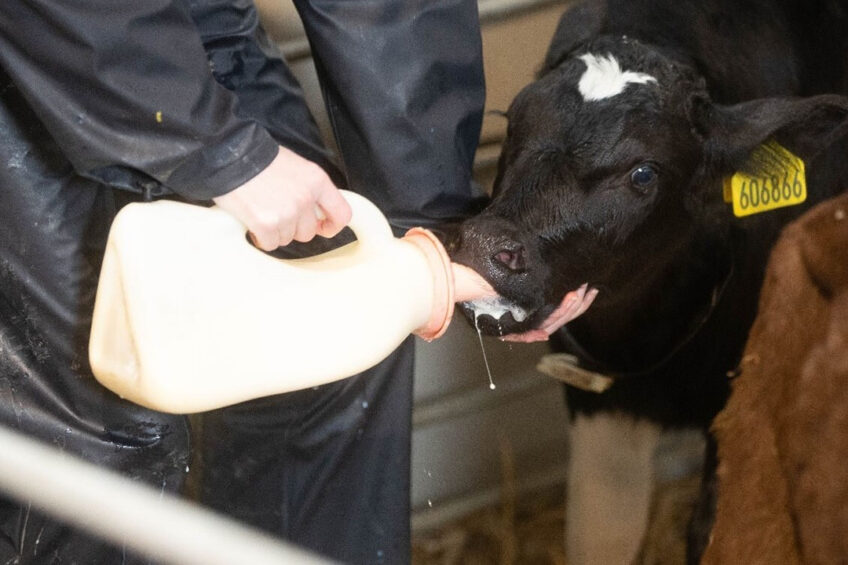Adequate colostrum helps ensure dairy calf health

Industry research has found that 61% of dairy calves and 20% of suckler calves left to suckle the dam for colostrum did not receive enough IgG antibodies for successful passive transfer. Could this present an opportunity for farmers to improve the short and long-term health and performance of their herds?
“Passive transfer of disease-fighting antibodies from the dam is reliant on feeding enough high-quality maternal colostrum as quickly as possible after birth,” says Emily Hall, livestock farmer and product manager for Nettex. She notes that simple management measures can be taken to ensure more passive transfer success rates, which will give calves a stronger start to life.
Amount and timing of colostrum
Updated guidelines recommend calves receive a minimum of 3 litres within the first 2 hours of life and an additional 3-4 litres within 6- 12 hours of birth. This means that in the first 12 hours of life, a calf will receive a total of 6-7 litres of high-quality colostrum.
Hall notes that IgG molecules are absorbed by the small intestine and then delivered to the blood supply. This declines rapidly after 12 hours of life. So, for successful passive transfer of IgG antibodies, colostrum quality needs to be a minimum of 50g/l IgG, which equates to 22 Brix when measured with a refractometer.
Improved management
To meet the recommended benchmarks for passive transfer, producers can test colostrum quality with a refractometer.
“Studies have found 20-25% of calves don’t feed from the dam within the first 8 hours of life, and few consume enough colostrum within the peak absorption window,” says Hall. “Feeding colostrum via a bottle is preferable since the sucking reflex allows milk to go straight into the abomasum for fast absorption by the small intestine. While tubing is preferable to leaving the calf to suckle the dam, it will delay absorption by 2-4 hours due to being delivered into the rumen.”
When colostrum quality is below the recommended 22 Brix or below the minimum 6 litres, supplementation will boost antibody availability and energy supply to the calf.
Supplementing colostrum
“Whether calves can get all of their colostrum from the dam or if you are needing to supplement, it is essential for the short and long-term health of the calf to ensure it is receiving adequate amounts of the right quality, at the right time,” says Hall.
A maternal dam on the same farm is the best source to help protect the calves from on-farm pathogens. However, should this not be possible, supplementation should be considered.






